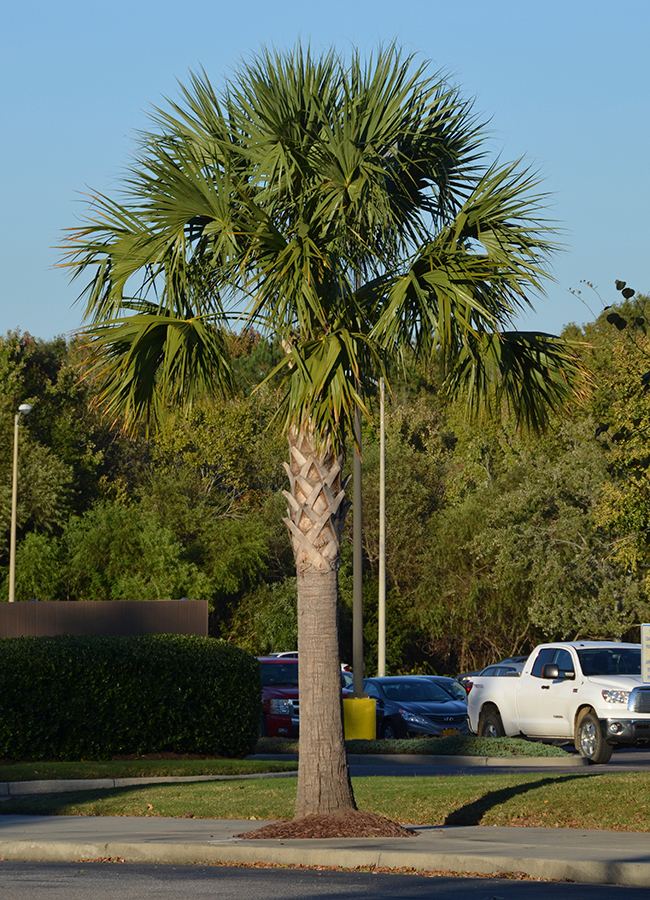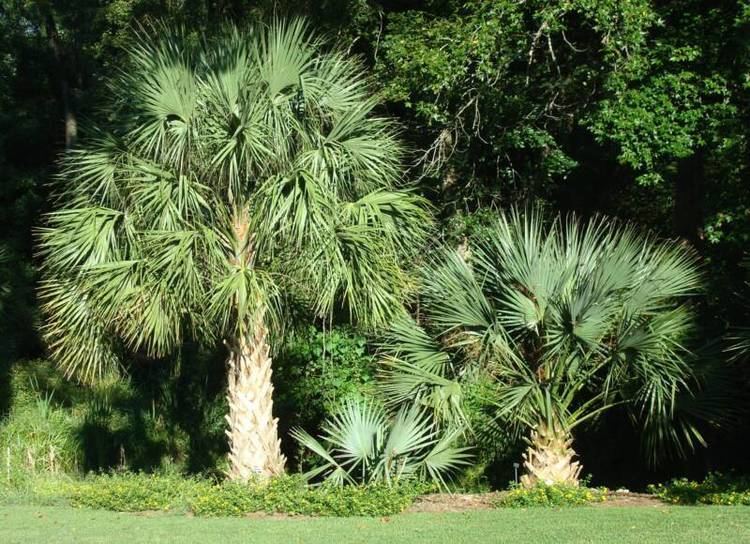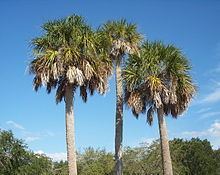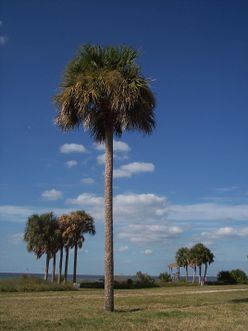Tribe Sabaleae Rank Species | Subfamily Coryphoideae Genus Sabal Higher classification Sabal | |
 | ||
Similar Sabal, Palm trees, Sabal minor, Livistona, Washingtonia | ||
Sabal palmetto, also known as cabbage-palm, palmetto, cabbage palmetto, blue palmetto, Carolina palmetto, common palmetto, swamp cabbage and sabal palm, is one of 15 species of palmetto palm. It is native to the deep southern United States, as well as Cuba, the Turks & Caicos Islands, and The Bahamas.
Contents
- Sabal palmetto cabbage palm tree
- Description
- Historical background
- Cultivation and uses
- Sabal Lisa
- Symbolic use
- References

In the United States the native range of Sabal palmetto is the coastal plain of the lower East Coast from southeast North Carolina southward to Florida and west along the Gulf Coastal plain to Texas.

Sabal palmetto cabbage palm tree
Description

Sabal palmetto grows up to 65 feet or 20 metres. Starting at ½ to ⅔ the height the tree develops into a rounded, costapalmate fan of numerous leaflets. A costapalmate leaf has a definite costa (midrib) unlike the typical palmate or fan leaf, but the leaflets are arranged radially like in a palmate leaf. All costapalmate leaves are about 0.20 inches or 5.1 millimetres across, produced in large compound panicles up to 8.2 feet or 2.5 metres in radius, extending out beyond the leaves. The fruit is a black drupe about .5 inches or 1.3 centimetres long containing a single seed. It is extremely salt-tolerant and is often seen growing near both the Atlantic Ocean coast and the Gulf of Mexico coast.

Sabal palmetto is hardy to USDA zone 8, and has been reported to have some cold hardness down to −13 °C or 8.6 °F. Maintenance of the Cabbage Palm tree is very easy and very adaptable. The cabbage palmetto is known to tolerate drought, standing water and brackish water. Even though this palm is drought-tolerant, it thrives on regular light watering and regular feeding. It is highly tolerant of salt winds, but not saltwater flooding.
Historical background

The cabbage-like terminal bud has been eaten as hearts of palm. The bristles on the sheaths of young leaves have been made into scrubbing brushes. The trunks have been used as wharf piles. On June 28, 1776, Charleston patriots under William Moultrie made a fort of palmetto trunks and from it defended successfully against the British in the Revolutionary War.
Cultivation and uses

Sabal palmetto is a popular landscape plant known for its tolerance of salt spray and cold. Because of their relatively long establishment period and prevalence on ranchlands, few, if any are grown from seed in nurseries. Instead, established plants are dug in the wild with small rootballs since virtually all the severed roots die and must be replaced by new roots in the new location. Most leaves are removed at this time to reduce transpiration. It is the state tree of South Carolina and Florida. Most references rate the species as hardy to USDA hardiness zone 7b or 8a. Cabbage palms have excellent hurricane resistance, but are frequently over-pruned for a variety of reasons.

The growing heart of the new fronds, also known as the terminal bud, gives the tree its "cabbage" name, since this is extracted as a food and tastes like other undifferentiated plant meristem tissue, such as the heart of a cabbage or artichoke. It is one of several palm species that is sometimes used to make heart of palm salad. Heart of palm was commonly eaten by Aboriginal Americans. However, extracting the heart will kill this species of palm, because the terminal bud is the only point from which the palm can grow and without this bud the palm will not be able to replace old leaves and will eventually die.
The cabbage palm is remarkably resistant to fire, floods, coastal conditions, cold, high winds and drought. Despite this, recent mortality has been caused by Texas phoenix palm decline (TPPD) a phytoplasma currently found on the west coast of Florida.
Sabal palmetto trunks appear in two different conditions, which can be confusing (see photo). When leaves die, the leaf bases typically persist for a while, creating a spiky, "basketweave" effect. These remnant leaf bases are called "bootjacks" or "boots", for short. The name stems from the "Y" shape that was reminiscent of devices used to aid individuals in removing boots. Transplanted palms are sometimes deliberately shorn of these bootjacks. Taller specimens are more likely to have lost their bootjacks and appear relatively smooth and columnar. The loss of bootjacks is a natural, if poorly understood, phenomenon as the palm does not create a leaf abscission zone so the loss of the leaf bases results from some other physical or biological process.
Sabal 'Lisa'
Recently, a new mutant form of Sabal palmetto has been discovered in South West Florida, and named as a cultivar Sabal palmetto 'Lisa'. The difference between the 'Lisa' and the wild-type Sabal palmetto is in the form of the leaf. The 'Lisa' has leaves that are costapalmate, acute, not pendulous, not filamentose, rigid, not strongly divided, cupped, and slightly undulating. This mutation of Sabal palmetto is beginning to be seen in the nursery trade, as it is just as hardy to cold, salt, drought, fire and wind as the wild type of the species, but looks different. Seeds from Sabal palmetto 'Lisa' have a 68% chance of becoming true to type, the other 32% develop as the wild type.
Symbolic use
The sabal palmetto is the official state tree of both Florida and South Carolina (the latter is nicknamed "The Palmetto State").
The annual football rivalry game between Clemson and South Carolina is known as the "Palmetto Bowl".
A silhouette of a palmetto (S. palmetto) appears on the official flag of the US State of South Carolina.
Two palmettos (S. palmettos) appear in the official great seal of the US State of Florida.
